Home Safety Checklist For Phoenix
Staying safe and secure in your home should be your largest priority. But are you missing some key safety components? Take this home safety checklist for Phoenix and find out where your house needs some work.
This guide begins with a few whole-house safety techniques, and then we delve down to specific room ideas. Then, call (602) 649-6096 or send in the form below for more information.
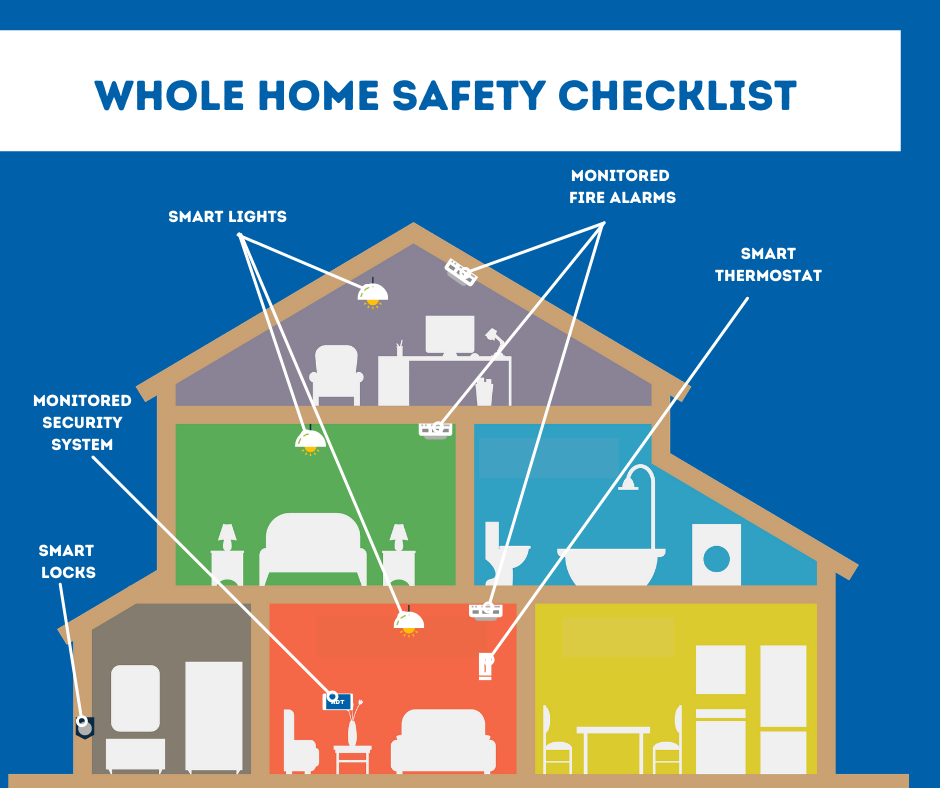
General Home Safety Checklist for Phoenix
While you should use a room-by-room approach to home safety, there are some items that work for the whole-house approach. These components can sync with one another through a smart hub, and often can react to one another. You can also manage all your home safety equipment through a smartphone app, such as ADT Control:
-
Monitored Home Security System: Each one of your entryways should use a sensor that notifies you to intrusion. As your alarm triggers, your monitoring agent picks up the call and quickly sends emergency personnel.
-
Smart Lighting For Each Room: Sure, you can schedule your smart lighting so your home is more eco-conscience. But smart lights can also help you stay safe throughout an emergency. Have your lights flash on when a sensor goes off to scare off burglars or illuminate a path to a secure area.
-
Smart Thermostat: Likewise, a smart thermostat in Phoenix can save you 10%-15% in energy costs. Also, it can flip on your exhaust fan when your alarms senses a fire.
-
Monitored Fire Alarms: It’s code that you should have a smoke detector on every level of your house. You can improve your fire readiness by utilizing a monitored fire detector that senses excessive smoke and heat, and pings your 24-hour monitoring agents when it detects a fire.
-
Smart Door Locks: Every entryway that uses a keyed lock can use a smart lock. Now you may set key codes to friends and family and receive alerts to your smartphone when they are unlocked. Your doors can even automatically turn off, letting you quickly leave during a fire or dangerous situation.
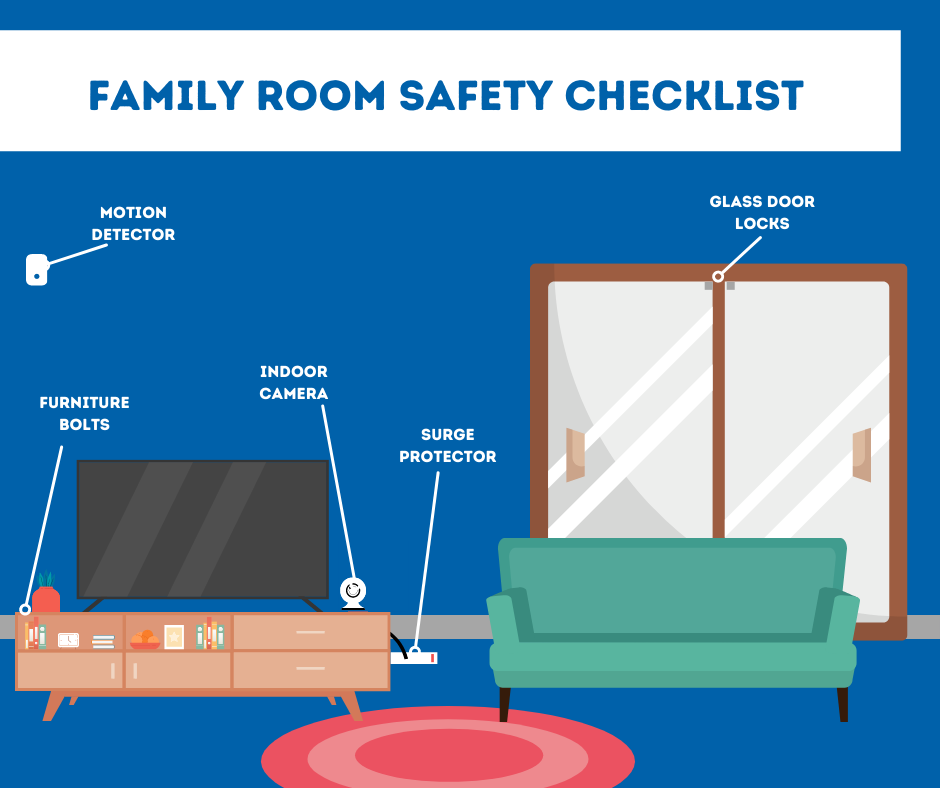
Family Room/Living Room Safety Checklist For Phoenix
You’ll spend a lot of time in your living room, so it can be the best area to improve your home safety. Popular items, like a big screen or video game console, typically are located in your family room, making it a popular space for burglars. Begin with installing a motion detector or indoor security camera in there, then continue on with some of these safety protocols:
-
Motion Sensors: By putting in motion sensors, you’ll have a shrieking noise anytime they sense unexpected motion in your living room. You’ll want motion detectors that aren’t set off by pets or you’ll have your sirens go off each time your cat roams by for a bite of food.
-
Security Camera: An indoor security camera offers a visual on your family room. Watch real-time streams of everything so you can see what’s going on without leaving your bed. Or talk with your kids in the room with the two-way talk feature.
-
Surge Protector/Cord Maintenance: Safeguard those electronics and stop overtaxing your electric system with a surge protector. For additional energy-efficiency, set up a smart plug with a surge protector in the unit.
-
Heavy Furniture Secured To The Wall: If you have babies or toddlers, you’ll need to bolt your heavy furniture and entertainment center to a wall. This is especially important if your living room has rugs or carpet that could make furniture extra unstable.
-
Enhanced Locks For Glass Doors: If your living room uses a sliding door that opens to a deck, patio, or screened-in porch, you get that the latch is pretty worthless. Put in a custom lock, like a metal bar or locks that secures the door to the top and bottom of the opening.
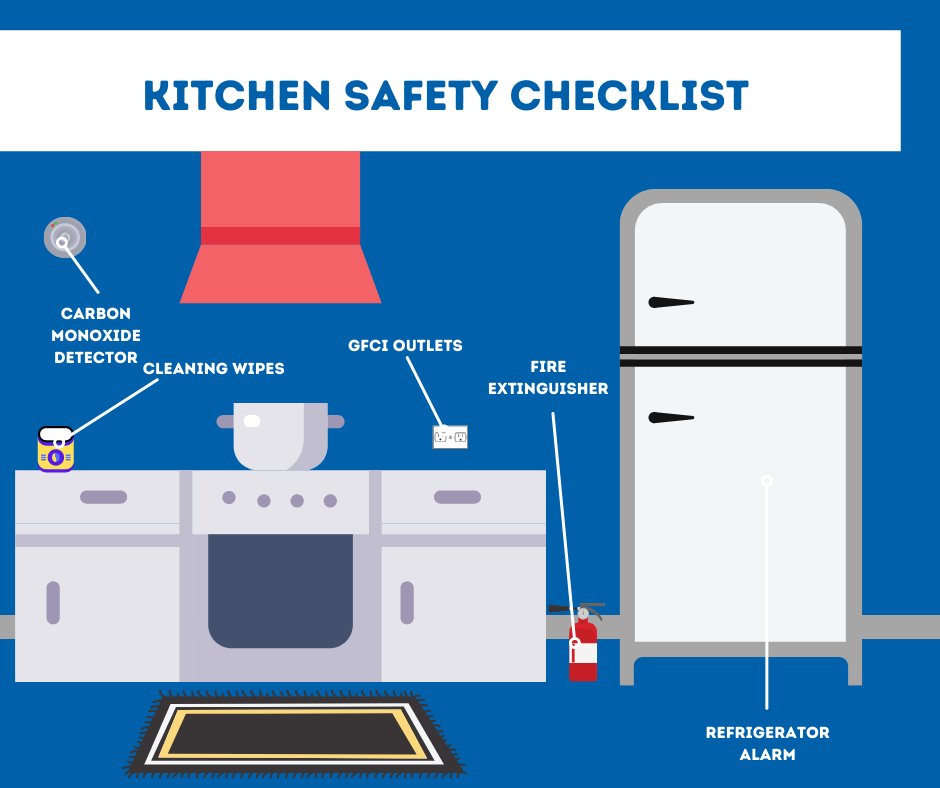
Kitchen Safety Checklist For Phoenix
The kitchen has plenty of items that should provide comfort and safety to your house. Many of these objects should be a snap to add and should be bought from the a retail store:
-
Fire Extinguisher: Fire can spring up from an unwatched skillet or an errant grease splatter. Always have a fire extinguisher in close reach for any cooking mishaps.
-
Circuit Interrupter Box On Every Outlet: A GFCI outlet should be installed everywhere they’re by water to lessen the chance of a deadly shock. That means the plug outlets around your sink and kitchen counter. For 30 years, it’s been code to have one circuit interrupter outlet per circuit. But for simplicity’s sake, you’ll want to use a single GFCI per outlet.
-
Monitored CO Detector: A CO detector is needed in kitchens that have gas for the oven and range. If your gas appliances spring a leak, the carbon monoxide detector will cause a high-decibel sound and call your monitoring expert.
-
Cleaning Wipes Or Spray: The biggest safety hazard in the kitchen is the viruses, bacteria, and cross-contamination that comes with blood from meat and dairy. Always store cleaning wipes or a bleach spray to sanitize your area when cooking.
-
Refrigerator Alarm: The food items in the refrigerator should stay at a constant temperature to be safe to eat. If you accidently leave the fridge or freezer door open, then a constant beep will tell you to shut it securely. Some appliances already have this installed, others do not, and you’ll have to pick up a fridge alarm from online.
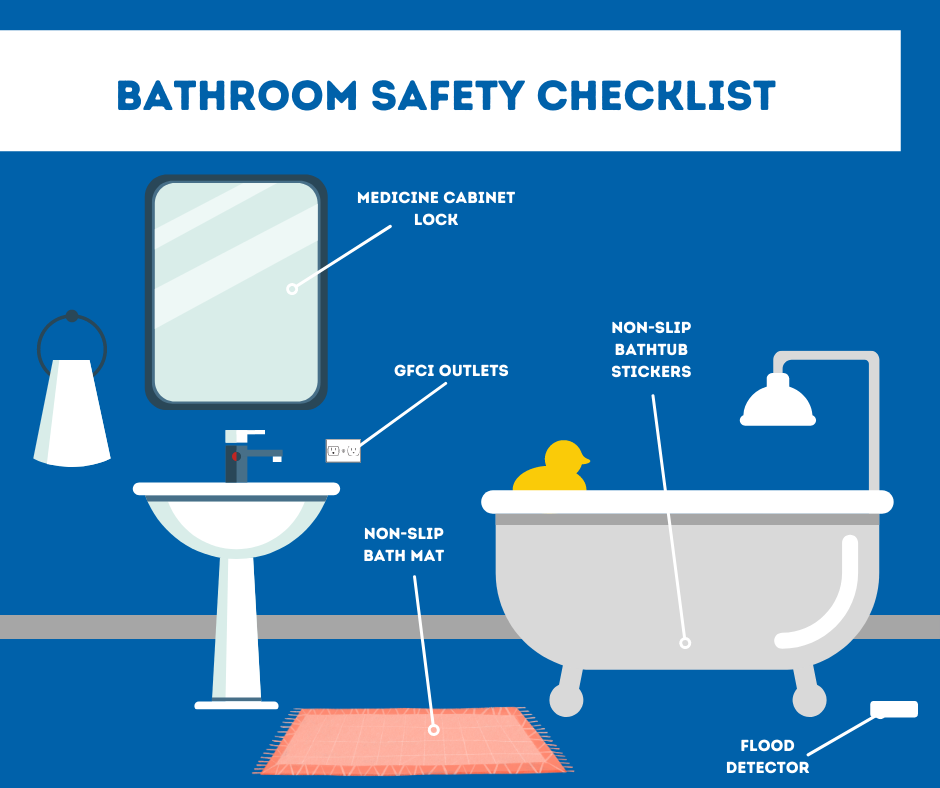
Bathroom Safety Checklist For Phoenix
Just because you may not have a lot of room in your bathroom there’s still safety issues. From flood prevention to anti-surge outlets, here are five safety improvements for your bathroom:
-
Flood Detectors: A leaking toilet or shower can lead to a whole lot of destruction. Find out early about leaks with a flood detector and save yourself from reflooring the entire bathroom.
-
No-slip Bath Mats: A slip in the bathroom can be devastating, causing bumps, sore joints, or trips to the hospital. You can prevent these problems with a textured bathroom mat for while you towel off.
-
Non-slip Bathtub Stickies: Likewise, a tub can be a slippery surface to be on. Make sure every tub has some textured stickers so your feet have a rough patch to grip.
-
Medicine Door Latch: If you have curious toddlers or a family member with memory lapses, you should take additional care regarding medicine. Secure your prescriptions by installing a medicine cabinet with a latch that locks.
-
GFCI Circuits: Just like the kitchen, you should also install a surge protecting circuit interrupter outlet on every bathroom circuit. These will stop the flow of the current if they ever get wet or you have a sudden surge from a curling iron or hair dryer.
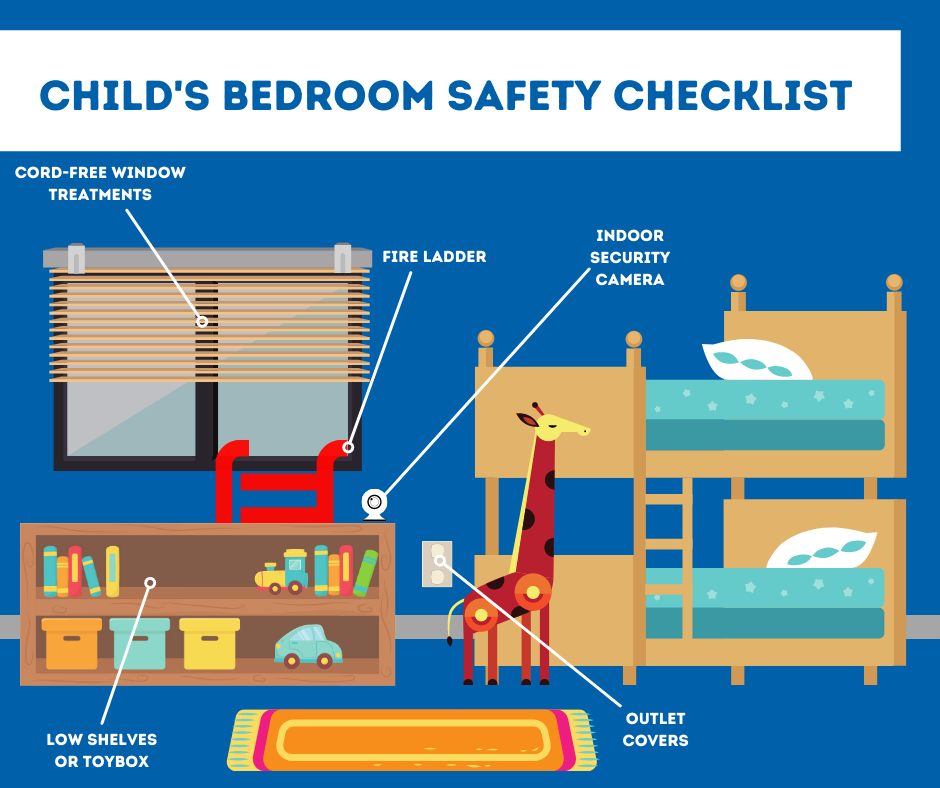
Kid’s Bedroom Safety Checklist For Phoenix
Your child’s bedroom should counterbalance safety with accessibility. If their window treatments or other items are safe but difficult to manage, then your child may get around the device with unsafe activities -- like shimmying up a bookshelf -- to touch them. Try these easy, and safe, ideas:
-
No Cord Window Coverings: Safety experts have designated corded window treatments a secret problem for both children and pets. Install motorized treatments that your child can easily control via remote. Or go state-of-the-art and pair your motorized coverings to your security system so they open without anyone’s help at dawn, and go down in the evening for an easier sleep.
-
Indoor Security Camera: An indoor security camera perched on your toddler’s dresser can double as a high tech baby monitor that you can view from a mobile device. And when they need your help, they can push the 2-way talk button that comes with the camera.
-
Outlet Plug Covers: While each outlet should have protective covers on them for your little children, this is especially important in their bedroom. It’s the one room in your house where your children will most likely play by themselves without consistent additional supervision.
-
Window Escape Ladder: If you use bedrooms on above the first story, then you need to have a window fire ladder. These will let your children escape even if the stairs or lower levels are engulfed in smoke and fire. Just remember to rehearse how to unfurl them a few times a year.
-
Toy Chest Or Low Shelves: It’s interesting to look at a toy box as a safety component, but you’ll get it if you’ve ever stepped on a building block in your stocking feet. A clean floor gives your child a quick retreat when there’s a fire or break-in.
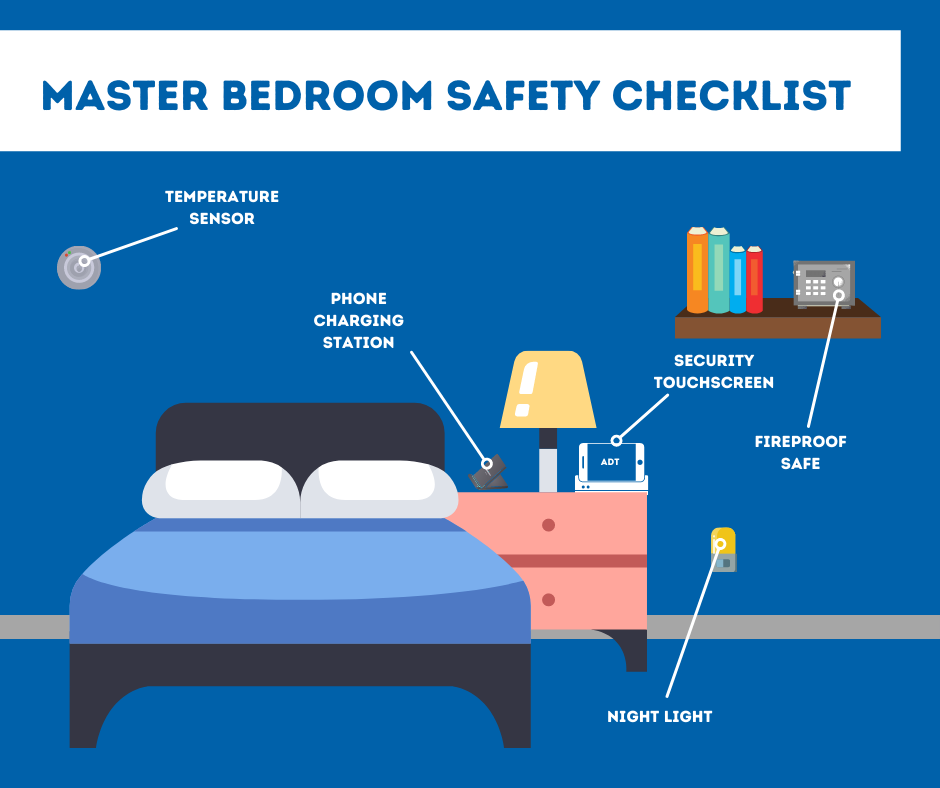
Main Bedroom Safety Checklist For Phoenix
The main bedroom should be a refuge, so let your safety devices give you peace of mind if you experience an emergency. After all, being wrenched awake by a wailing buzzer can be confusing.
-
Smart Hub Touchscreen: Having a smart hub on your dresser gives you a sense of what’s going on without leaving your bed. You could alternatively turn on your ADT smartphone app but, the large touchscreen may be easier to use to use when you’re yawning and finding your bearings.
-
Device Charging Station: We depend on our smartphones for so many things now GPS, news readers, time wasters, and maybe even phones. The only problem is that an uncharged device can cut us off from communications if something goes wrong. To keep it nice and ready, a charging cord or station becomes should be used nightly.
-
Nightlights Or Voice Activated Smart Lights: A tiny light can calm you when you’re jolted awake from an alarm or unexpected noises. If you won’t drift off to sleep with a small nightlight, put in smart bulbs in your bedroom. Then you can control light on-demand with a push of a button or vocal command.
-
Fireproof Safe: Store your vital papers like birth certificates, medical information, or a spare checkbook in a fireproof safe. This can be a bigger one that is located in a corner or a smaller portable safe that you can carry as you escape during a fire or other emergency.
-
Heat Sensor: The problem with most bedrooms is that they can feel too stuffy or be chilly since they are across the house from the thermostat. A temperature sensor can talk to your smart thermostat so you will have a comfortable, peaceful sleep at the perfect temperature.
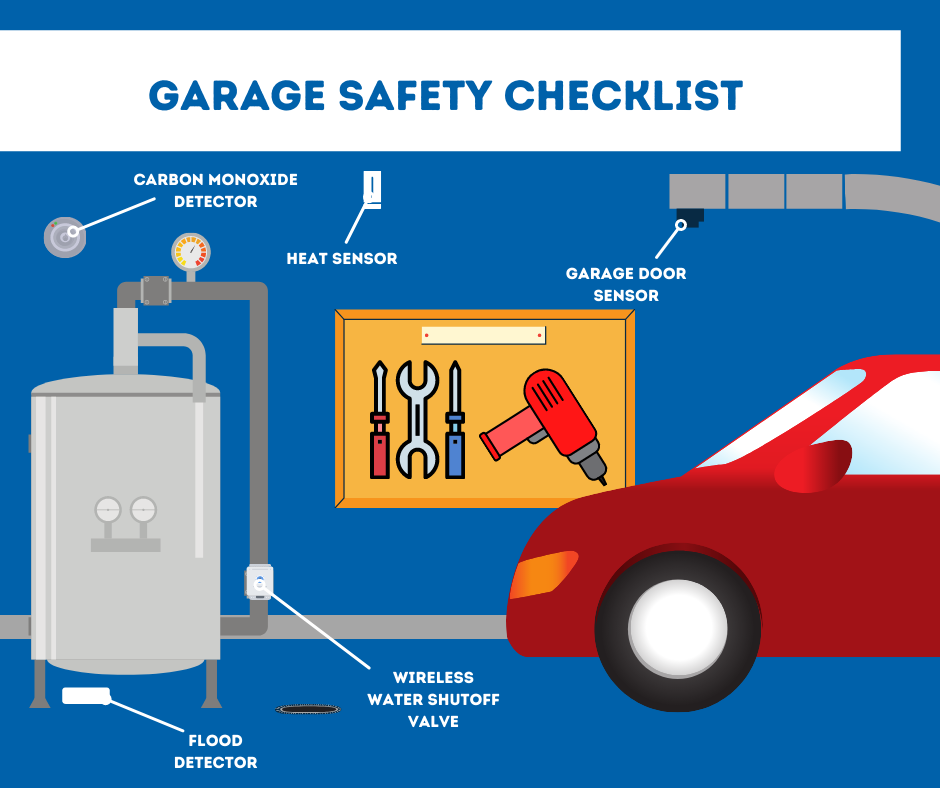
Basement/Garage Safety Checklist For Phoenix
Most safety needs in the garage or basement deal with your pipes or furnace. Finding issues early can stop bigger emergencies in the future. So, as you take a look around your basement or garage, pay attention to these crucial items:
-
Water Sensor Or Sump Pump Alarm: Putting a flood alarm next to your water heater and sump pump can stop you from finding a pond when you step into your garage or basement. The last you need is to spend the weekend getting rid of standing water and going through all those soggy boxes.
-
Carbon Monoxide Detector: It’s beneficial to hang a carbon monoxide alarm in areas where a CO leak can spring up. If you employ a gas furnace, you’ll want to install an alarm in the same area as your unit.
-
Remote Water Shutoff Valve: If your water sensor detects a hot water heater leak or a broken pipe, then you need to shut off the primary water line quickly. With a remote shutoff valve, you can stop water flow from anywhere in the world. That’s perfect when you’re visiting relatives and get a flood sensor text on your smartphone.
-
Garage Door Sensor: Leaving the garage open causes all sorts of issues. You can waste heat or air through that gaping hole, and all sorts of animals or lurkers can just wander in. A remote sensor will notify you about a forgotten garage door and lets you lower it with your phone.
-
Temperature Sensor: A heat alarm in your basement or garage is handy if you wonder about frozen pipes. The temperature in these areas can be wildly different than the rest of the house, so you may need to have a close look on the temperature with your mobile app.
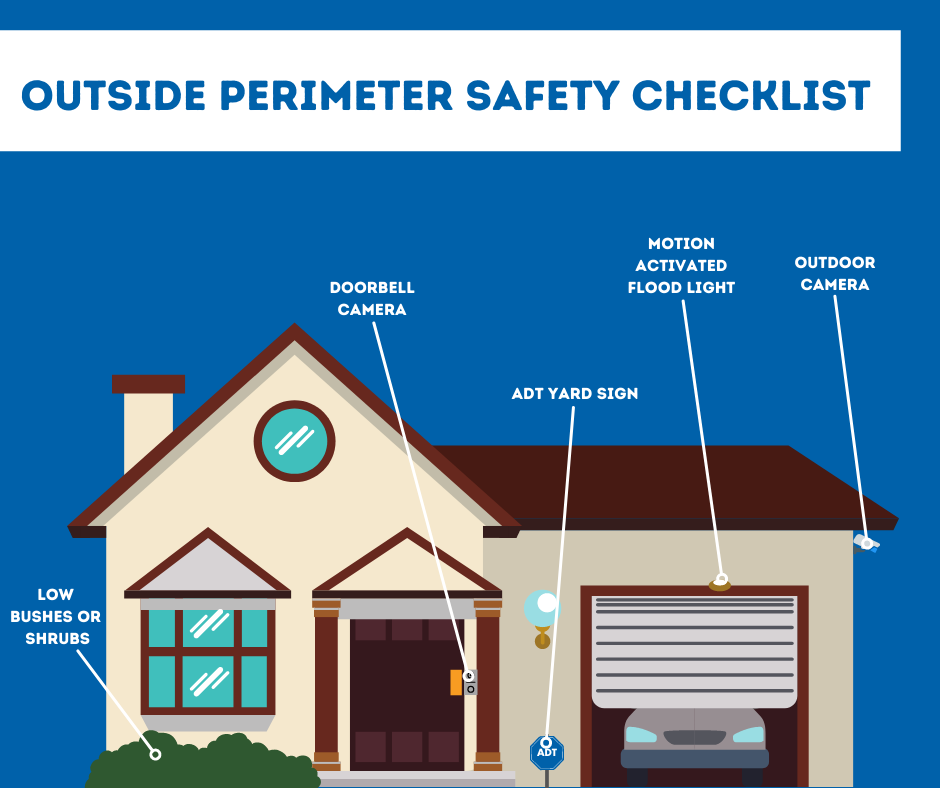
Outside Perimeter Safety Checklist for Phoenix
Your landscaping, drive, and front walk are just as imperative to make safe as the interior of your home. Try the items on this checklist to defend your perimeter:
-
Doorbell Security Camera: See who’s knocking on the door before you answer it and welcome guests. View deliveries and look at video clips if they disappear.
-
Outdoor Security Camera: You can install outdoor security cameras to alert you to suspicious lurkers in your yard. These security cameras are especially useful in places where you might not have a window installed -- like a side yard or by the garage door.
-
Window Height Bushes: Overgrown foliage can give you some serenity, but they also obscure you seeing into the outside. Don’t give potential thieves a dark shadow to hide. Plus, high bushes, shrubs or foliage around your structure can obstruct gutters and invite bugs.
-
ADT Signs And Decals: One of the biggest disincentives for a thief is telling would-be burglars that you have a state-of-the-art ADT security system. An ADT yard stick by the front door and a window sticker will alert ne'er-do-wells that they should shove off to an unprotected score.
-
Motion Triggered Flood Lighting: Light is the best enemy to people who lurk in the dark. Motion-activated lights on your deck, porch, or garage can frighten possible intruders away. They also help you get inside when you come back home on those dark, winter nights.
Call Secure24 Alarm Systems To Help You With Your Home Safety Checklist for Phoenix
While Secure24 Alarm Systems can’t install each household item on your Phoenix home safety checklist, we can bring you a customized security system. With alarms, security cameras, and home automation, we can personalize the best system for your house’s needs. Simply phone (602) 649-6096 and talk to a professional or complete the form below. Or personalize your own solution with our Security System Designer.
